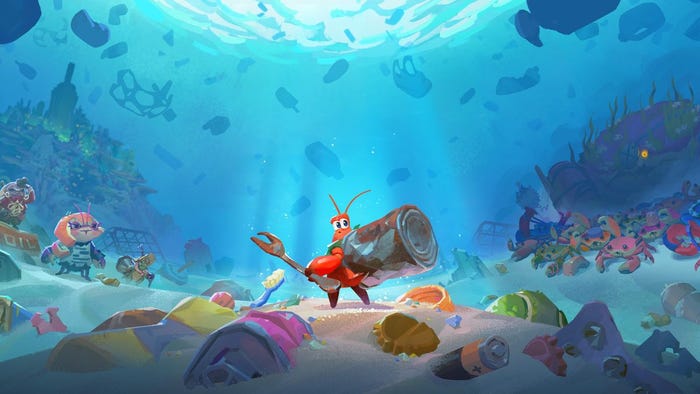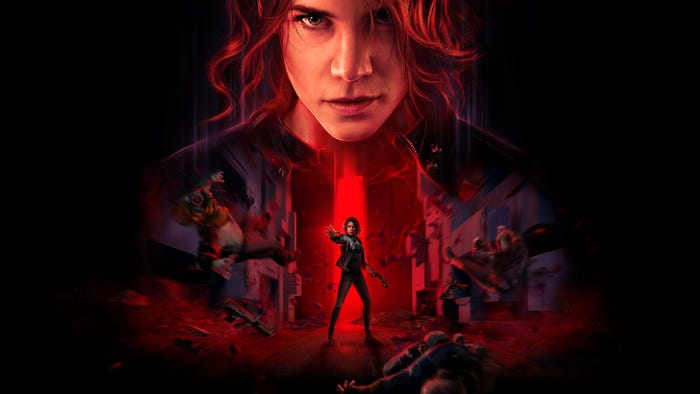Balancing Act – Gameplay and Story in Roguelikes
Discussing the balancing act seen when developing roguelike games between story and gameplay elements, in a challenge to find the best mix.

[Originally seen at BlackShellMedia http://blackshellmedia.com/2017/07/25/balancing-act-gameplay-story-roguelikes/]
Stories within video games are an element that takes up a decent amount of what a player will experience. Developers design gameplay to support a story while others will do the opposite, sacrificing the story instead. A middle-ground would be to find a balance between being able to present a narrative while still challenging the player. This is a goal many developers try very hard to achieve. The decision behind what developers will focus on comes down to what they want to express in their product.
Roguelikes are a vastly growing subgenre within role playing games. The idea behind the genre is similar to the Dungeon Crawler genre. Rougelikes have elements such as procedural generation, permadeath and item randomization. Story within the roguelike genre can be a complex thing to grasp, which is why some developers might try to keep story to a minimum by starting the game with a tutorial and an explanation of your main goal. Other games go the route of using visual design and lore to convey story or a certain atmosphere. This consists of dialogue that accompanies the player. The more detail about the world and characters in this dialogue the better.
There are two approaches to implementing story into a roguelike game: a developer can choose to create a story either before or after developing gameplay. This is, however, not the only way to do this. Sometimes, to keep development flowing organically, one person can work on the story while helping another design gameplay. Story can also act as what the player experiences throughout the game using what the roguelike genre delivers through its mechanics.
Player Experience
A different way to look at story within the roguelike genre is to allow for stories to happen as the player experiences them. You can call these "player stories" or interactions. To implement this within a roguelike, you must add context to the player's actions whether through gameplay or story. Many classic roguelikes rely on text and ASCII art alone, banking on player imagination. Modern roguelikes have the luxury of using all sorts of goodies to aid and assist in the player experience. A recent game, Catacomb Kids, is an amazing roguelike for this very thing, as it has a well-implemented use of interaction: everything not attached to a wall can be interacted with. Whether it is a barrel that hides an item or enemy or a random potion that can only be identified by drinking it. The use of multiple characters to choose from, with different traits and and abilities for each run helps to solidify a unique adventure on each run.
Another game, Rogue Legacy, starts you off as a knight who has to explore a castle to fight off evil creatures. If you die that character permanently dies and in your next run your heir takes your place, acting as another game life. Each run, new avenues reveal themselves in gameplay. You have permanent upgrades, the ability to purchase weapons, and you also can add special conditions that freeze procedural generation. A family tree is generated per death showing you how you have progressed. The idea is light on story, but each death provides the player with a sense of achievement due to the roguelike elements. The progression of the family tree through your lineage adds a sense of history to your experience.
In other cases a story can be self aware of the player's repeated deaths and experience and build a world based around that concept, whether you are an undead entity constantly returning to a new body on each playthrough, as seen in Dead Cells, or a nameless resistance member with different skillsets as seen in Streets of Rogue. The idea is to leave out ham-fisted dialogue and world-building and along for the gameplay and visuals to tell most of the story.
 Streets of Rogue supplies a random character with a random occupation with varied skills and abilities and plops you into the game world. Your goal is the same, but with procedural generation your path will always be new.
Streets of Rogue supplies a random character with a random occupation with varied skills and abilities and plops you into the game world. Your goal is the same, but with procedural generation your path will always be new.
Story Taking Priority Over Gameplay
Some roguelike games set out to inject as much story elements as possible within the player experience. Such games typically are turn-based and have a much slower pace to them. Many of them may not have fully voiced gameplay but instead rely heavily on written content. The turn-based gameplay allows for more flexibility when world building and adding detail to each section of the game. Each turn allows breathing room for the player, a time in which they can analyze surroundings and for the game to add hurdles to overcome.
Games like ADOM (Ancient Domains Of Mystery) and Tales of Maj'Eyal have a great mix of roguelike mechanics. These mechanics include the classic aspect of turn-based movement, meaning players must think before they act. There are a rich and varied set of unique classes to use for a run. As for the most important feature, content is randomly generated, allowing for the game experience to constantly surprise the player. They also feature heavy story telling elements with novel sized amount of dialogue.
Tales of Maj'Eyal is known to be just like reading a book, due to how much text the game has that the player can read. The plot is non-linear, and success depends on character planning and multi storyline choices. One run through this roguelike will not match a second due to the vast array of content. It displays a healthy balance of both gameplay and story within a roguelike game.
Traditional Approach to Story
For developers that have a story or idea already in mind, who want to build their game around that, then an approach for this would be to work within an act structure.
The first act should be designed to be played through once. At the very minimum, it could simply be an introduction cutscene. A more accessible idea would be to design this as a tutorial to introduce the player to game basics and mechanics. The importance however of this first act is to set the stage for the player. This should be designed to be played once and it needs to stick with the player so when they jump to the second act they know what the game is about. The smoother this part of the game goes for the player the more inclined they will be to continue playing. If it is too slow or uninteresting then you might be in for a shock when reviews start rolling in. The player is usually savvy with the basics for the game they purchase, saving time on not explaining common sense will likely be a smart move.
The second act will symbolize the core of the game, this is where all your gameplay lies but beside that each sequence that play out will progress the game story. The intention however is to be able to tell your story without bleeding into a third act. Writing in subplots within the story can create a clear characterization of the playable character. Through these subplots players can connect with their playable character, understand their motivations and personality and maybe establish a connected identity with them. By the time player's reach the third act there will be more of a personal aspect to the game.
The third act is more complex but more traditionally a turning point for the player. The goal here is to implement a conclusion. This can be done more simply with a last stage/biome or boss event. Endings don't always have to be straightforward however. You can save the world or you could default the final boss but end up causing characters more trouble. A game can end whichever way a developer wants, this is their choice and the only limit is their their imagination.

Three Act Structure Mockup
Mechanics at One with Story
The struggle with writing an immersive high quality story within a roguelike comes from trying to keep the gameplay intact. This kind of balance requires a developer to constantly analyze how each part of their game is made and where focus will be put.
There are many approaches to take when merging the two aspects of a Roguelike. One approach to take is to implement the key aspects of the genre and make them a part of the story. So for example the aspect of permadeath can be embedded into the story as a timeloop, similar to that of the movie Groundhog Day. However the specifics as to how this occurs are down to the personal choice of the developer in charge of the story.
Another example is the mechanic of Procedural Generation can be disguised as a curse that has affected the games levels or even the world that the games characters exist in. Each time a location changes on each run, it is a side effect of the story elements, rather than having no reason at all. This gives something players will normally recognized as just a genre standard and turns it into something even more special.
Emergent Narrative
A great technique I personally think helps roguelikes succeed is using emergent narrative when creating your game. An emergent narrative can be a story that isn't constructed by any person. It is a story that emerges from interactions between players and the system or systems that govern gameplay. This is the driving force of a player experience. The game should have a strong introduction, ending, and gameplay mechanics that don't distract from the quality of the game. Poorly designed gameplay, combat that doesn't have weight or impact, bad sound design, or many other elements can ruin this approach to emergent narrative in a roguelike. Compared to a big budget cinematic and linear cutscene heavy games, a roguelike can be a lot more gameplay orientated but the way to make story work is to focus on the player and how they can interpret it.
An example of this could be one harrowing playthrough a player has, where they start the game as a blank slate, but through a series of randomly generated locations and random NPC encounters, a backstory and character starts to develop based on the character's experienced. You could even tie in special stat bonuses/penalties based on the character's experiences to further cement this emergent gameplay. Or, you can randomly generate backstory like SanctuaryRPG!
Lore Makes a Huge Difference
On top of balancing gameplay to suit your story, something that will deeply benefit it is in-depth, detailed, and well-written lore for everything in your game. Many roguelikes will come with a Journal or some sort of Codex system that logs down everything you interact with in the game. This is sort of expected for the genre as it would become frustrating if there were no information to accompany the various elements within a roguelike. The recent release of Caveblazers is a very simple semi-clone of Spelunky and includes a journal that the main character uses as a way to jot down everything the player encounters. It contains all the information the player needs and can refer to at anytime. It becomes a necessary resource if one wants to survive up until endgame.
 Caveblazers Journal
Caveblazers Journal
Slow Reveals and Quests
A way to naturally introduce characters, mechanics, and quests is by using slow reveals. Since dying frequently in a roguelike is a common aspect of the genre, slow reveals can happen in tandem with this. New mechanics or side quests for the player can be introduced upon player death. At the beginning of each run those new elements can be introduced whether through NPC introduction or through on-screen popups. As soon as a player starts dying you can introduce mechanics or new side quests for the player once they respawn at the beginning of the game.
This allows you to expand the content of the game, things the player can do and also expand on either your game story or lore. If, for example, your game has a hub area, you can also do this and add new characters at certain points of a player's save progress. Slow reveals allow for the developer to control the general pacing of the game. Pacing is important as you don't want to bombard the player with too much at once. At first you can include unlocks and skills trees but later on expand on these through an aforementioned slow reveal with new characters or areas.
Reasonable Mechanics
Taking a step back from player experience and detailed stories, something that needs work in the genre is design. The design of gameplay in connection with game story is important. You can write about anything but in the end it may not relate to the gameplay in the best of ways. There are always certain formalities of the roguelike genre your game shouldn't break otherwise the experience might falter in the final product. Things like pitfalls, instant one-hit deaths, potions that have certain effects and the randomization of those effects.
 For example placing pitfalls into the first few levels of your roguelike might hinder gameplay and come off as too difficult. Another disastrous decision would be making an unidentifiable potion kill the player after drinking it for the first time—or having potion effects match visuals without randomizing this on each run. The correction of these gameplay elements would help retain gameplay balance, it might be tempting without a game story to have risks like these for the player but they don't always translate to a positive gameplay experience.
For example placing pitfalls into the first few levels of your roguelike might hinder gameplay and come off as too difficult. Another disastrous decision would be making an unidentifiable potion kill the player after drinking it for the first time—or having potion effects match visuals without randomizing this on each run. The correction of these gameplay elements would help retain gameplay balance, it might be tempting without a game story to have risks like these for the player but they don't always translate to a positive gameplay experience.
Balance, in All Things
Usually, story is handled quite well in many of the titles that I have played. Only rarely will it hinder my game experience. Once in a while, titles I play will have gameplay that doesn't fit the story or inbalances between the two which results in a lack luster experience. Those games will end up being forgotten at the bottom of a game shelf or in a bargain trade bin at a game store. It is important for developers to take the time to formulate mechanics that suitthe story they are writing but also make sure there is a balance of the two. Games solely focused on story tend to have lower quality gameplay, and games that focus solely on gameplay have nonexistent or uninteresting story elements. Never be afraid to pack in as much detail as you can within game lore. Also don't be shy when adding difficulty ramps to your end game. When ramping difficulty after a certain point in your game, as long as it makes sense to you then it will make to the player also. Look at what other developers have created. Many games developed today take inspiration from other titles. There is nothing wrong with that as much of the time developers end up bringing new ideas to the table as well as refinements to common roguelike mechanics. Story can be implemented with gameplay in many ways, whether allowing for player stories to form naturally with solid plot anchors or with a more traditional narrative here the game is split into main acts. The one thing to avoid is straying the path when constructing a roguelike. If the game shifts too much with gameplay mechanics or pacing it will most likely turn off players on release. A goal to strive for when balancing these the elements of story and gameplay is to strike an accord with how you want your player to perceive your game. Your story needs to interest them but also offer a challenge through well designed gameplay. Adding meat on the bones of your game allowing for them to return over and over again, all whilst focusing on immersion and interactivity. This will ensure the player will have something to come back to. Finding the best of both worlds and implementing them into your game is a part of your goal amidst many goals when developing a roguelike.
Enjoy reading this article? If you did please spread it around on social media. We love to interact with people in the industry and branching out to make connections with people at Black Shell Media. Our Twitter is located here.
Read more about:
BlogsAbout the Author(s)
You May Also Like









